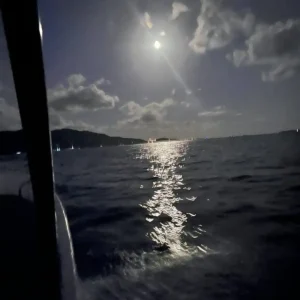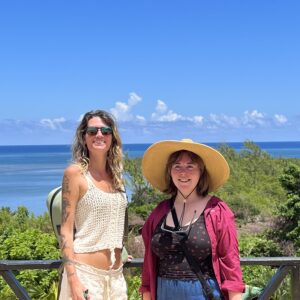Travel Info
All Things Travel Around Guanaja
Please note that we try to keep this information current but the airlines and ferry can change scheduling with little notice
Miami, Atlanta, and Houston have direct daily flights to Roatan. In the off season—September and October–they offer weekend flights only. Most flights arrive in Roatan around noon. Once in Roatan, your options for getting to Guanaja are to fly commercial, charter a small plane, take the ferry, or hire a boat.
Commercial flights:
There are no direct commercial flights from Roatan to Guanaja. One must fly to the mainland and then fly to Guanaja. Currently these flights all leave Roatan in the morning and all the flights from the States arrive around noon so one must spend the night in Roatan.
Charter flights:
There are a couple charter companies that will fly directly to Guanaja from Roatan. The options range from a 5-seater to a much bigger turboprop. The small plane can handle 3-4 people and the bigger planes can handle up to 20 or more.
Ferry:
A ferry runs to and from Guanaja 2 days a week. On Friday and Saturday, it runs from Roatan to Guanaja and on Saturday and Sunday from Guanaja to Roatan. The trip is an hour and a half and is the cheapest option. Unfortunately, the ferry schedule is such that Saturday is the only day one can make the trip from home to Guanaja in a single day, and the only day one can return home in a single day. For this reason, most people opt to book their trip from Saturday to Saturday.
Private boat:
Hiring a boat is possible. Hiring a big boat is expensive, and hiring a more budget friendly smaller boat is great in nice weather but can make for an uncomfortable ride in inclement weather.
We can help:
If you choose to do the Saturday ferry option, we will give you detailed information on buying a ticket and getting to the boat, and we will pick you up at our end. We can charter the hopper flight for you if you would rather fly. If you choose to hire a boat, we can help you with that. We are always willing and able to help you set up the Roatan to Guanaja leg of your trip.
Travelers must have a valid passport with minimum 6 month’s validity at time of entrance. A traveler does not need a visa if visiting less than 90 days and has proof of return flight.
All travelers must fill out an immigration form online at INM – Immigration Prechequeo or a paper form that is available upon arrival.
If traveling to Guanaja from anyplace other than United States, check online for any travel restrictions or peculiarities that might pertain to your country of origin.
 High temperatures in Guanaja range from 80’ F. in January to around 85’F. in August/September. Average ocean water temperatures (for you divers) are exactly the same. 80’ in January, ranging up to 85’ in September.
High temperatures in Guanaja range from 80’ F. in January to around 85’F. in August/September. Average ocean water temperatures (for you divers) are exactly the same. 80’ in January, ranging up to 85’ in September.
Guanaja receives on average 100 inches of rain a year. Although it can rain at any time, the official rainy season is from the Beginning of October through January. Even in the rainy season, there are very few “wash-out” days. During the rainy season, the “Green” island becomes the “Really Green” island.
In the Caribbean, official hurricane season is from June 1—November 30. The busy part of hurricane season is generally August and September. The Bay Islands, due to their location, receive very few hurricanes. So, although it is unusual for Guanaja to have a hurricane, it is possible.
Sunset and sunrise will vary approximately an hour throughout the year. At the beginning of winter, the sun starts setting around 5:15, and the beginning of summer will see the sun setting around 6:15.
Note: The time in the Bay Islands is the same as Central Time in the United States. Honduras does not recognize daylight savings, however, so in the summer months Bay Island time is the same as Mountain Time.
 Pack what you would wear at home during the summer. Shirts and shorts made from ‘quick dry’ material is always good since there is always a chance of getting caught in a fast moving squall. A waterproof bag or sleeve for your phone is good for the same reason, and a cheap, lightweight rain jacket or poncho can come in handy.
Pack what you would wear at home during the summer. Shirts and shorts made from ‘quick dry’ material is always good since there is always a chance of getting caught in a fast moving squall. A waterproof bag or sleeve for your phone is good for the same reason, and a cheap, lightweight rain jacket or poncho can come in handy.
A lot of people like to wear light, long-sleeve SPF rated shirts to minimize the amount of sunscreen needed. Bring sunscreen, it can be hard to buy on the island. Polarized sunglasses really help when out on the water. A lot of people like to wear or bring some type of water shoes like Crocs or swim sandals.
The island has bugs. They are unavoidable in a tropical location. Bring bug repellent and maybe bug bite ointment. Sunrise and sunset is when the sand flies or no-see-ems are out but you can get bites just about any time especially if you’re hiking.

